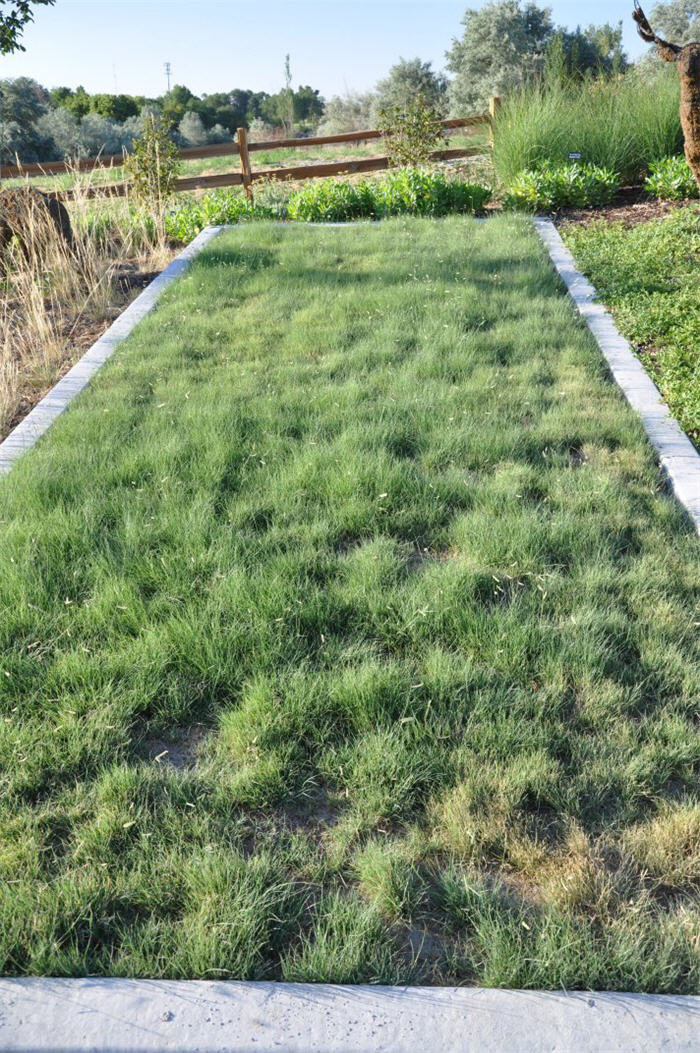| Botanical Name: Bouteloua gracilis | |
| Common Name: Blue Grama |

-
Anatomy
-
Culture
-
Design
Plant Type
Ground cover, Perennial, Grass
Height Range
Under 1', 1-3'
Flower Color
Gold, Green
Flower Season
Summer, Fall
Leaf Color
Green, Yellow Green
Bark Color
n/a
Fruit Color
n/a
Fruit Season
n/a
Sun
Full
Water
Very Low
Growth Rate
Moderate, Slow
Soil Type
Sandy, Clay, Loam, Rocky, Unparticular
Soil Condition
Average, Poor, Well-drained, Dry
Soil pH
Neutral, Basic
Adverse Factors
n/a
Design Styles
Japanese, Meadow, Mediterranean, Spanish
Accenting Features
Silhouette
Seasonal Interest
Summer, Fall
Location Uses
Perennial Border, Lawn, Parking Strip, Roadside, Walkways, With Rocks
Special Uses
Cut Flowers, Erosion Control, Mass Planting, Lawn Alternative, Naturalizing
Attracts Wildlife
n/a
Information by: Stephanie Duer
Photographer: El Nativo Growers, Inc.
Photographer: El Nativo Growers, Inc.
-
Description
-
Notes
This warm-season grass is a plains native, and tolerates a wide range of soil conditions. Particularly useful as either a mowed or unmowed lawn. Unmowed, it grows up to 20 inches, including the flower. Attached to the stem at a right angle, the flowers resemble tiny combs. Flowers are attractive in arrangements. It can be mowed to a height of 2 inches for a more formal look, though you'll loose out on the attractive flower. Tolerant of drought and poor soils. Also attractive as single plants, especially tucked into rock gardens.
Basically disease- and pest-free. Grows best in full sun. If using as a lawn, mix with sideoats grama and buffalograss for an attractive, hardy turf. Mowing promotes thick sod development. As a warm-season grass, Blue Grama goes dormant when the temperatures drop in the fall.